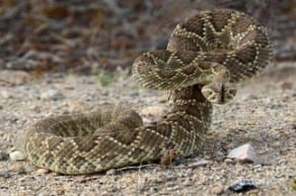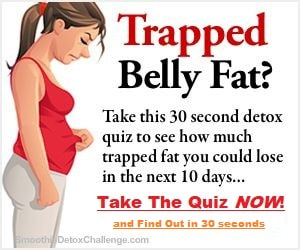Mojave rattlesnakeCrotalus scutulatus |

Custom Search
|
|
The Mojave rattlesnake (Crotalus scutulatus) is a highly venomous pit viper found in the deserts of the southwestern United States and central Mexico, with 2 subspecies recognized by scientists.
In the United States, the Mojave rattlesnake is found in most of Arizona, southern California, Nevada, southwestern Utah, southern New Mexico and some parts of Texas. Its range extends south to Puebla, near the southern edge of the Mexican plateau in the central region of Mexico. As the species, common name indicates this snake lives in the Mojave Desert, but that's only a small part of their range. They live mainly in the high desert and lower mountain slopes from 500 to 5000 feet (150m to 1500m) in elevation but the species seems to prefer the desert flats over rocky, hilly or canyon type habitats. Found in most desert habitats it's most commonly found in areas of scattered creosote bush, but also mesquite, cactus scrub, desert wash, semi-grasslands and Joshua tree woodland habitats.
 Mojave rattlesnake ready to strike Mojave rattlesnake ready to strike
Adult snakes of this species reach a length of 2 to 4 feet, making it a medium-sized rattlesnake. Mojave rattlesnakes can be colored greenish gray to olive-green in the higher regions and brownish or yellowish on the lower habitats.
They have a triangular shaped head and the tail has white and black bands, the white bands are wider than the black bands, besides the obvious rattle. Because of the species occasional greenish hue they are also known as the Mojave green rattlesnake in some areas. The Mojave rattlesnake is often mistaken for the Western Diamondback rattlesnake (Crotalus atrox), because of their overlapping ranges and similar appearance. Both species have well defined diamonds with light edges down the middle of their backs. They brumate alone or in small groups during the winter, and are active from April until September. They are primarily nocturnal and sometimes crepuscular snakes, hiding in rodent burrows or under crevices or desert bushes during the heat of the day. The Mojave rattlesnake has a reputation for being aggressive towards humans, such behavior is often exaggerated but like other snakes, they will defend themselves if disturbed or harassed. These snakes are hunted, killed and eaten by other snakes like the California kingsnake but also roadrunners and other mammals and birds of prey. Subspecies There are 2 subspecies of the Mojave Rattlesnake currently recognized. Mojave rattlesnake - Found in the US from California eastward to western Texas and southward to Mexico Huamantlan rattlesnake - This subspecies is found only in Mexico, in Hidalgo, Tlaxcala, Puebla and southwestern to Veracruz. Venom / Bite Even though all rattlesnake species are venomous, this species is particularly dangerous to humans. The Mojave rattlesnake has the most potent venom of any rattlesnake in North America. Its venom is about 16 times more toxic than that of the Sidewinder (Crotalus cerastes) and surpasses even that of the tiger rattlesnake (Crotalus tigris). But not all Mojave rattlesnakes have the same type of venom in fact there 2 two types of venom found within their population, known as types "A" and "B". The type "A" venom, known as the "Mojave toxin", is very different than most rattlesnake venoms in that it is highly neurotoxic, affecting the respiratory and nervous systems of the bite victim. The type "B" venom is very similar to most other rattlesnake venoms so it's hemotoxic, and it effectively destroys tissue around the bite site. The venom type "B" is considered 10 times less toxic than type "A" venom. But some Mojave rattlesnake specimens have a mixture of both types of venom. Even other rattlesnake species have been found to possess a small percentage of the "Mojave toxin" in their venom. Their bite is usually not as painful as other rattlesnake bites, nevertheless, it should be treated as soon as possible. In contrast to popular belief, snake bite fatalities are uncommon, due to the wide availability of antivenom. Diet / Feeding
These snakes are nocturnal predators, foraging actively in search of prey. Their diet consists mostly of small rodents like kangaroo rats and lizards but they also feed on other snakes, birds, bird eggs and even some insects. Reproduction The mating season takes place in the spring and summer. The mojave rattlesnake is an ovoviparous snake species, the eggs hatch within the female, which gives birth to live young in late July, August or early September, coinciding with the summer monsoons. They use abandoned rodent burrows to give birth anywhere from 2 up to 17 hatchlings, but the average brood size is around 8. The younglings measure up to 10 inches (25 cm) in length. Conservation / Threats The Mojave rattlesnake is classified on the IUCN Red List of Threatened Species as a Least Concern species (LC). This means that it has a wide distribution and range and presumed large population, although the population size is unknown it presumably is over 100,000 individuals.
|
Did You Know?
Capable of slithering at speeds up to 20km/h black mambas are the world’s fastest snakes. Scientific classification |
© 2014 Snake Facts About Us | Privacy Policy | Contact






